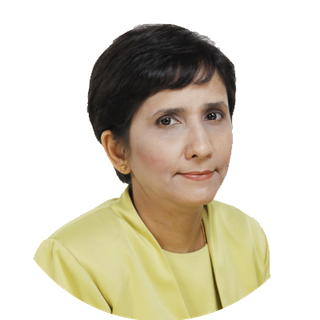20 years on and still at the top of its game
Takashimaya surges ahead despite challenges.

LAST year, Takashimaya Singapore marked its 20th anniversary. The operator of Singapore's biggest department store was able to rise to the occasion, drumming up record sales of $639 million here.
That figure was 3.4 per cent or $21 million higher than the $618 million sales the group achieved in the preceding year - no mean feat in Singapore's highly competitive retail landscape. The group's latest turnover figure was more than double its first full-year turnover of $234 million back in 1994.
Net profit, though, fell $2 million or 4.2 per cent to $46 million for the year ended Dec 31, 2013 - due to higher manpower cost and rentals along with a step-up in advertising and promotions expenditure and extensive store renovations as part of the 20th anniversary celebrations.
The group invested more than $10 million in last year's store refurbishment - its biggest renovation budget following the store's opening in August 1993.
And, therein lies a key reason for the retailer's continuing success, despite the onslaught of competition from new malls, specialty stores and online shopping.
Takashimaya Singapore's managing director Yoko Yasuda says that regular refurbishment is vital in helping the group create a "fresh and dynamic shopping environment to keep our customers excited".
To determine just what needs to be revamped and the scale of works, the group keeps its ears close to the ground.
"We are constantly listening to our customers, and have a keen understanding of their needs and wants. We're always innovating, trying to stay half a step ahead of consumer lifestyles," says Ms Yasuda in a recent interview with The Business Times.
Another important factor that has enabled the group to create a unique shopping experience is its large store area - at 370,000 sq ft, spanning six levels at Ngee Ann City in the key Orchard Road shopping belt.
This affords the group space to display a wide array of merchandise from competing brands in each category, be it handbags, shoes or menswear. "This makes it easy for our customers to browse, walk around, compare the price and merchandise," Ms Yasuda explains.
Takashimaya's substantial store size has also enabled it to replicate the Japanese concept of "depachika" or department store basement floor for a foodstuff market area.
Takashimaya's Basement 2 houses a food hall. Food is one of the top three contributors to store sales, along with branded boutiques and ladies' accessories.
With a wide variety of goods under one roof, there is something for everyone in the family - from grandparents, to parents, to children. This one-stop shopping destination formula has enabled Takashimaya to withstand the proliferation of specialty fashion stores in the past two decades targeting primarily young customers.
Takashimaya's top management also highlights how the the group has benefited from Singapore's success as a magnet for tourists, with attractions such as the integrated resorts/casinos and Gardens by the Bay.
"We've enjoyed the spillover effect and have gained a reputation as a premium 'must-stop' for tourists," said Ms Yasuda.
Tourist shopping at the store has been on the rise. Last year, it accounted for 23 per cent of store sales, up from 22 per cent in 2012 and 21 per cent in 2011.
While Indonesians, Chinese and Malaysians remained the top three nationalities of tourists at the store last year, Cambodians made it to the top five list for the first time. Filipino shoppers were in fourth position last year.
Despite its success, Takashimaya has faced its share of challenges operating in the Singapore market.
The most difficult period was when it first opened in 1993, as the group was introducing unique Japanese concepts to Singapore consumers - such as an art gallery, a local designers' corner and even a cultural centre where cooking and art appreciation classes were held.
Patronisation rates were low and Takashimaya later ceased these services. Looking back, Masahiro Yoshino, deputy general manager and a member of Takashimaya Singapore's senior management team from Day One, reckons the group was a little ahead of its time here.
Ironically, he adds, Singaporeans are now more sophisticated and looking for such soft offerings. Rentals today, however, are too high for the group to consider reintroducing such services, since they do not actually make money.
The group took to gradually introducing brands, products and new unique concepts closer to the tastes and needs of local customers.
Danny Yeo, managing director of Knight Frank, which was instrumental in bringing Takashimaya to Singapore, says of the retailer's success over the years: "They have learnt and become more bold and aggressive in revamping the store, though this costs money. . . They have been very consistent in refreshing the store. As the store is large, you will notice that, at any one time, there is always something new being introduced - whether in refreshing its layout, creating a new spot for new-to-market products, revamping the product mix, or holding seasonal and country promotions.
"Takashimaya should do well if they continue to plough back part of their earnings to reposition and refresh their store constantly - so customers don't get tired of coming back to shop at Takashimaya," said Mr Yeo.
BT is now on Telegram!
For daily updates on weekdays and specially selected content for the weekend. Subscribe to t.me/BizTimes
Companies & Markets
Wilmar appoints former minister George Yeo as independent non-executive director
UOB Kay Hian says ‘disadvantageous’ to reveal details of key management’s remuneration
Deutsche Bank has cut dozens in Asia private banking overhaul
Middle East violence heightens market fears of rate hikes, inflation
Tokyo's Nikkei drops more than 1,000 points, most in 3 years
Cordlife calls for trading halt after shares sink to all-time low, pending announcement
